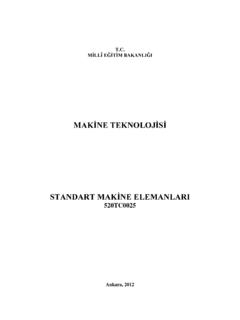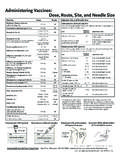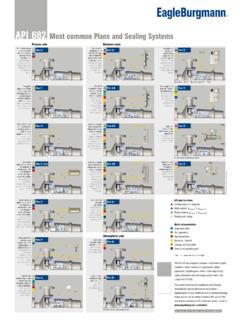Transcription of Digital Signature Standard (DSS) - NIST
1 FIPS PUB 186-4 FEDERAL INFORMATION PROCESSING STANDARDS PUBLICATION Digital Signature Standard (DSS) CATEGORY: COMPUTER SECURITY SUBCATEGORY: CRYPTOGRAPHY Information Technology Laboratory National Institute of Standards and Technology Gaithersburg, MD 20899-8900 Issued July 2013 Department of Commerce Cameron F. Kerry, Acting Secretary National Institute of Standards and Technology Patrick D. Gallagher, Under Secretary of Commerce for Standards and Technology and Director FOREWORD The Federal Information Processing Standards Publication Series of the National Institute of Standards and Technology (NIST) is the official series of publications relating to standards and guidelines adopted and promulgated under the provisions of the Federal Information Security Management Act (FISMA) of 2002.
2 Comments concerning FIPS publications are welcomed and should be addressed to the Director, Information Technology Laboratory, National Institute of Standards and Technology, 100 Bureau Drive, Stop 8900, Gaithersburg, MD 20899-8900. Charles Romine, Director Information Technology Laboratory Abstract This Standard specifies a suite of algorithms that can be used to generate a Digital Signature . Digital signatures are used to detect unauthorized modifications to data and to authenticate the identity of the signatory. In addition, the recipient of signed data can use a Digital Signature as evidence in demonstrating to a third party that the Signature was, in fact, generated by the claimed signatory.
3 This is known as non-repudiation, since the signatory cannot easily repudiate the Signature at a later time. Key words: computer security, cryptography, Digital signatures, Federal Information Processing Standards, public key cryptography. i Federal Information Processing Standards Publication 186-4 July 2013 Announcing the Digital Signature Standard (DSS) Federal Information Processing Standards Publications (FIPS PUBS) are issued by the National Institute of Standards and Technology (NIST) after approval by the Secretary of Commerce pursuant to Section 5131 of the Information Technology Management Reform Act of 1996 (Public Law 104-106), and the Computer Security Act of 1987 (Public Law 100-235).
4 1. Name of Standard : Digital Signature Standard (DSS) (FIPS 186-4). 2. Category of Standard : Computer Security. Subcategory. Cryptography. 3. Explanation: This Standard specifies algorithms for applications requiring a Digital Signature , rather than a written Signature . A Digital Signature is represented in a computer as a string of bits. A Digital Signature is computed using a set of rules and a set of parameters that allow the identity of the signatory and the integrity of the data to be verified. Digital signatures may be generated on both stored and transmitted data. Signature generation uses a private key to generate a Digital Signature ; Signature verification uses a public key that corresponds to, but is not the same as, the private key.
5 Each signatory possesses a private and public key pair. Public keys may be known by the public; private keys are kept secret. Anyone can verify the Signature by employing the signatory s public key. Only the user that possesses the private key can perform Signature generation. A hash function is used in the Signature generation process to obtain a condensed version of the data to be signed; the condensed version of the data is often called a message digest. The message digest is input to the Digital Signature algorithm to generate the Digital Signature . The hash functions to be used are specified in the Secure Hash Standard (SHS), FIPS 180. FIPS approved Digital Signature algorithms shall be used with an appropriate hash function that is specified in the SHS.
6 The Digital Signature is provided to the intended verifier along with the signed data. The verifying entity verifies the Signature by using the claimed signatory s public key and the same hash function that was used to generate the Signature . Similar procedures may be used to generate and verify signatures for both stored and transmitted data. 4. Approving Authority: Secretary of Commerce. ii 5. Maintenance Agency: Department of Commerce, National Institute of Standards and Technology, Information Technology Laboratory, Computer Security Division. 6. Applicability: This Standard is applicable to all Federal departments and agencies for the protection of sensitive unclassified information that is not subject to section 2315 of Title 10, United States Code, or section 3502 (2) of Title 44, United States Code.
7 This Standard shall be used in designing and implementing public key-based Signature systems that Federal departments and agencies operate or that are operated for them under contract. The adoption and use of this Standard is available to private and commercial organizations. 7. Applications: A Digital Signature algorithm allows an entity to authenticate the integrity of signed data and the identity of the signatory. The recipient of a signed message can use a Digital Signature as evidence in demonstrating to a third party that the Signature was, in fact, generated by the claimed signatory. This is known as non-repudiation, since the signatory cannot easily repudiate the Signature at a later time.
8 A Digital Signature algorithm is intended for use in electronic mail, electronic funds transfer, electronic data interchange, software distribution, data storage, and other applications that require data integrity assurance and data origin authentication. 8. Implementations: A Digital Signature algorithm may be implemented in software, firmware, hardware or any combination thereof. NIST has developed a validation program to test implementations for conformance to the algorithms in this Standard . Information about the validation program is available at Examples for each Digital Signature algorithm are available at Agencies are advised that Digital Signature key pairs shall not be used for other purposes.
9 9. Other Approved Security Functions: Digital Signature implementations that comply with this Standard shall employ cryptographic algorithms, cryptographic key generation algorithms, and key establishment techniques that have been approved for protecting Federal government sensitive information. Approved cryptographic algorithms and techniques include those that are either: a. specified in a Federal Information Processing Standard (FIPS), b. adopted in a FIPS or a NIST Recommendation, or c. specified in the list of approved security functions for FIPS 140. 10. Export Control: Certain cryptographic devices and technical data regarding them are subject to Federal export controls.
10 Exports of cryptographic modules implementing this Standard and technical data regarding them must comply with these Federal regulations and be licensed by the Bureau of Industry and Security of the Department of Commerce. Information about export regulations is available at: 11. Patents: The algorithms in this Standard may be covered by or foreign patents. iii 12. Implementation Schedule: This Standard becomes effective immediately upon approval by the Secretary of Commerce. A transition strategy for validating algorithms and cryptographic modules will be posted on NIST s Web page at under Notices. The transition plan addresses the transition by Federal agencies from modules tested and validated for compliance to previous versions of this Standard to modules tested and validated for compliance to FIPS 186-4 under the Cryptographic Module Validation Program.

















